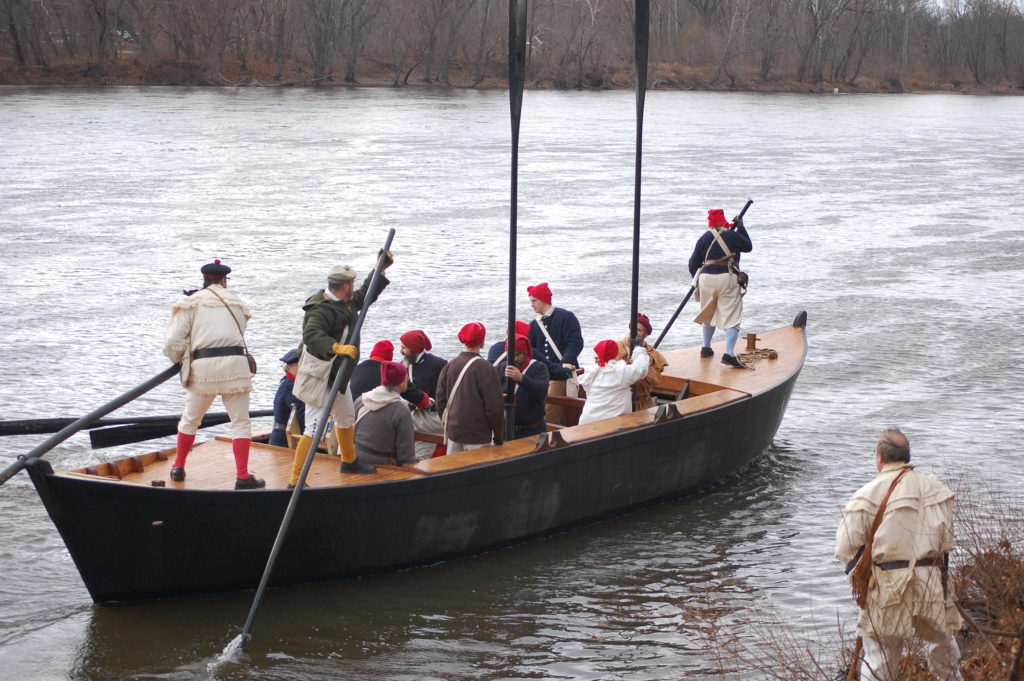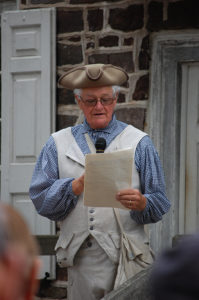
The Continental Army’s Christmas crossing in 1776 gets much of the attention by historians, and rightfully so.
But it wasn’t the only time General George Washington crossed the Delaware that month.
“As the story unfolds, weeks before December 1776, Washington was being pushed from northern New Jersey toward Trenton by the British and Hessians,” says Thomas Maddock II, a historical interpreter at the park. “Washington wanted to keep them from crossing the river and going on to capture Philadelphia.”

However, Washington and his troops were outnumbered, starving and exhausted. “So he couldn’t stop them militarily,” Maddock says. “Instead, he sent men north and south along the river—they covered 40 miles in all—and commanded them to seize or destroy every rowboat in between.”
Then, on December 2, Washington crossed the Delaware River for the first time, from Trenton to Morrisville. He proceeded to spread his army up and down the banks of the river to ensure no British or Hessian soldier attempted to cross.
At that point, the British and Hessians decided to suspend their fighting for the winter. Traditionally, European wars weren’t fought in the winter, according to Maddock. The large army was broken into smaller units. A portion of it was split between Mount Holly, NJ, Trenton, and Princeton; the remainder was sent to New York.
“When Washington found out there were only 1,400 Hessians in Trenton, he got excited. He hadn’t won anything, and Congress was getting anxious,” Maddock says.
Washington devised a plan to surprise them. It took him and his army over 11 hours to cross the Delaware River with their artillery and horses on Christmas night (Washington’s second crossing that December). They arrived in Trenton at 8 AM, well after planned, but the Continental Army emerged victorious after only an hour and a half.
But with 900 Hessian soldiers surrendering and more soldiers nearby in Princeton, Washington needed to quickly figure out what to do with the prisoners. He decided to take them back across the river—his third crossing—and imprison them in Newtown, PA.
Soon after, Washington received word from soldiers stationed south of Trenton: these men were supposed to help in the Battle of Trenton but never made it there. They were ready to pick up the fight, and reinforcements were on their way from Philadelphia.
Washington crossed the river for a fourth and final time that December on Dec. 29-30 and went on to join the Battle of Assunpink Creek, also known as the Second Battle of Trenton, on January 2, 1777.
It was the second in a sequence of three pivotal victories by Washington’s troops between December 25 and January 3: a period that’s come to be described as the Ten Crucial Days.

